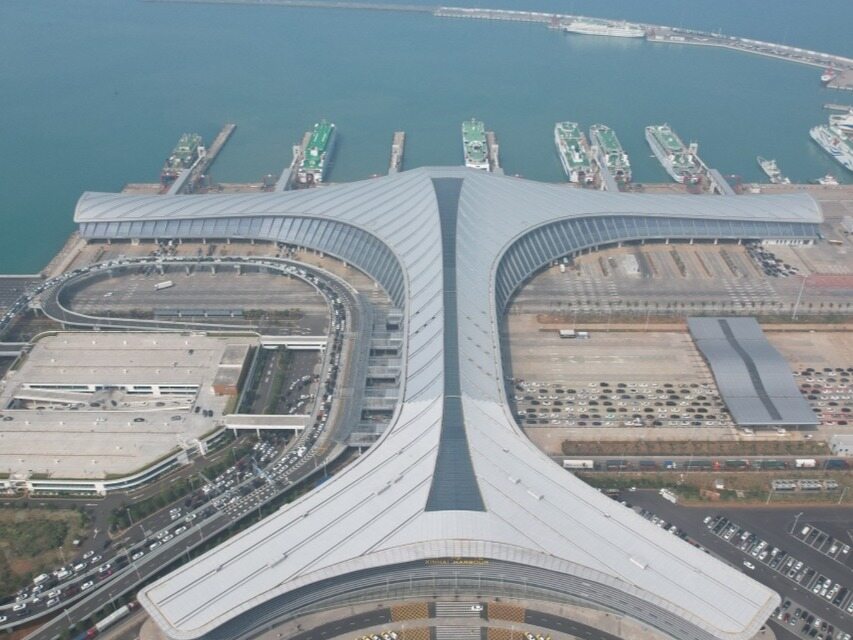- Transportation hub construction provides strong support for higher-quality development

Building a transportation powerhouse has become a key goal of China's future transportation development. Jiangsu, as an important node in transportation construction in the Yangtze River Delta, has continuously expanded its investment in transportation infrastructure. On March 10, the Jiangsu Provincial Government held a press conference to interpret the "Outline of the Comprehensive Three-dimensional Transportation Network Planning of Jiangsu Province". The "Outline" clearly states that by 2035, Jiangsu will basically build a modern, high-quality comprehensive three-dimensional transportation network that is convenient, smooth, cost-effective, low-carbon intensive, intelligent, advanced, safe and reliable. By then, the province will basically achieve 30 minutes to the high-speed rail and 60 minutes to the airport in the main urban areas of the districts, 30 minutes to the expressway and 30 minutes to the railway in the county-level urban areas, and 15 minutes to the national and provincial trunk highways in the township-level towns.
Jin Ling, deputy director of the Jiangsu Provincial Department of Transportation, introduced that according to the "Planning Outline", by 2035, Jiangsu transportation will form "two circles": one is "123 travel traffic circle", 1 hour for commuting in the metropolitan area and 2 hours for smooth travel Jiangsu and major cities across the country are covered within 3 hours; secondly, relying on aviation and high-speed rail, it integrates into the global "123 express cargo logistics circle", with 1-day delivery in China, 2-day delivery in neighboring countries, and 3-day delivery in major cities around the world.

According to reports, on the basis of the original "four vertical and four horizontal" comprehensive transportation channel layout in Jiangsu Province, the "three verticals" of Tongsujia, Yantaixi Changyi, Ningluo and the "two horizontals" of Liansuhe and Yanhuai have been added. "There are 5 channels in total, forming a comprehensive transportation channel pattern of "seven verticals and six horizontals", and a radial channel pattern of "one core and nine directions" with Nanjing as the core. Focusing on the construction of "Jiangsu on the track", the "six vertical and six horizontal" high-speed railway network of 4,800 kilometers, the "three vertical and three horizontal" 2,100-kilometer ordinary-speed railway network, and the 1,400-kilometer inter-city and metropolitan area (suburban) railways in urban agglomerations; The 7,100-kilometer expressway network of "fifteen shots, six verticals, ten horizontal lines and multiple connections" and the 4,000-kilometer thousand-ton waterway network of "two verticals and five horizontals"; highlight the development of multi-level airport clusters in Nanjing metropolitan area and airport clusters around Shanghai. The Ningzhenyang hub section focuses on enhancing Nanjing's national influence and urban competitiveness, and promoting integrated cross-regional coordinated development with Yangzhou and Zhenjiang.
Jin Ling said that this year, the railway network will continue to be intensified, and the construction of the North Yanjiang High-speed Railway, the Yantaixi Changyi Railway, the Tongsu Jiayong Railway, the second phase of the Shanghai-Sutong Railway and the Ningwu Railway will be fully constructed, and the construction of the Ninghuai Intercity Railway will be accelerated. , Shanghai-Suhu Railway and other projects; continue to improve the comprehensive efficiency of the highway network; continue to promote the construction of deep-water seaports and key arterial waterways; continue to optimize the layout and functional positioning of the airport. Editor / Xu Shengpeng
Comment
 Praise
Praise
 Collect
Collect
 Comment
Comment
 Search
Search














Write something~